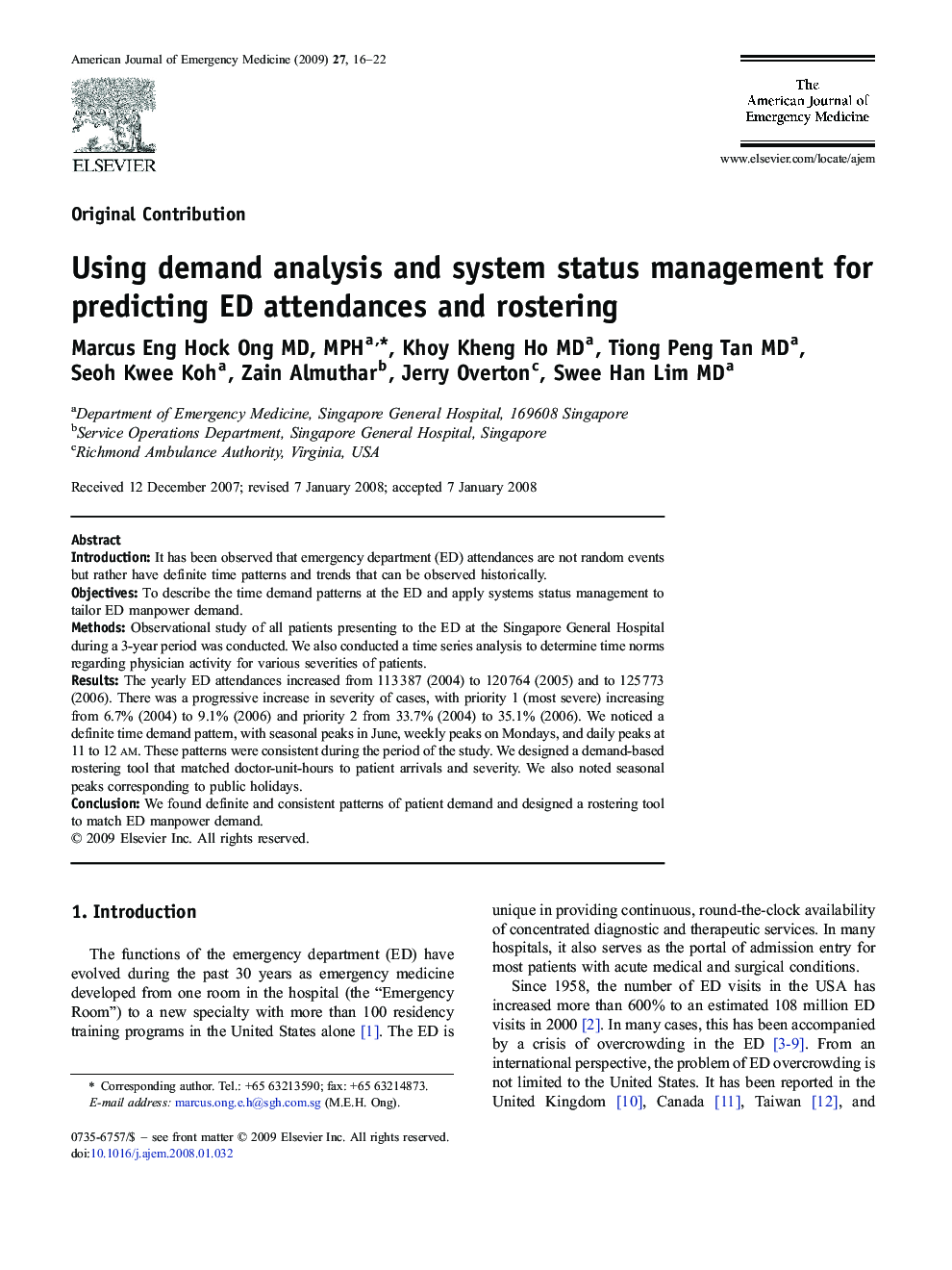| Article ID | Journal | Published Year | Pages | File Type |
|---|---|---|---|---|
| 3226766 | The American Journal of Emergency Medicine | 2009 | 7 Pages |
IntroductionIt has been observed that emergency department (ED) attendances are not random events but rather have definite time patterns and trends that can be observed historically.ObjectivesTo describe the time demand patterns at the ED and apply systems status management to tailor ED manpower demand.MethodsObservational study of all patients presenting to the ED at the Singapore General Hospital during a 3-year period was conducted. We also conducted a time series analysis to determine time norms regarding physician activity for various severities of patients.ResultsThe yearly ED attendances increased from 113 387 (2004) to 120 764 (2005) and to 125 773 (2006). There was a progressive increase in severity of cases, with priority 1 (most severe) increasing from 6.7% (2004) to 9.1% (2006) and priority 2 from 33.7% (2004) to 35.1% (2006). We noticed a definite time demand pattern, with seasonal peaks in June, weekly peaks on Mondays, and daily peaks at 11 to 12 am. These patterns were consistent during the period of the study. We designed a demand-based rostering tool that matched doctor-unit-hours to patient arrivals and severity. We also noted seasonal peaks corresponding to public holidays.ConclusionWe found definite and consistent patterns of patient demand and designed a rostering tool to match ED manpower demand.
